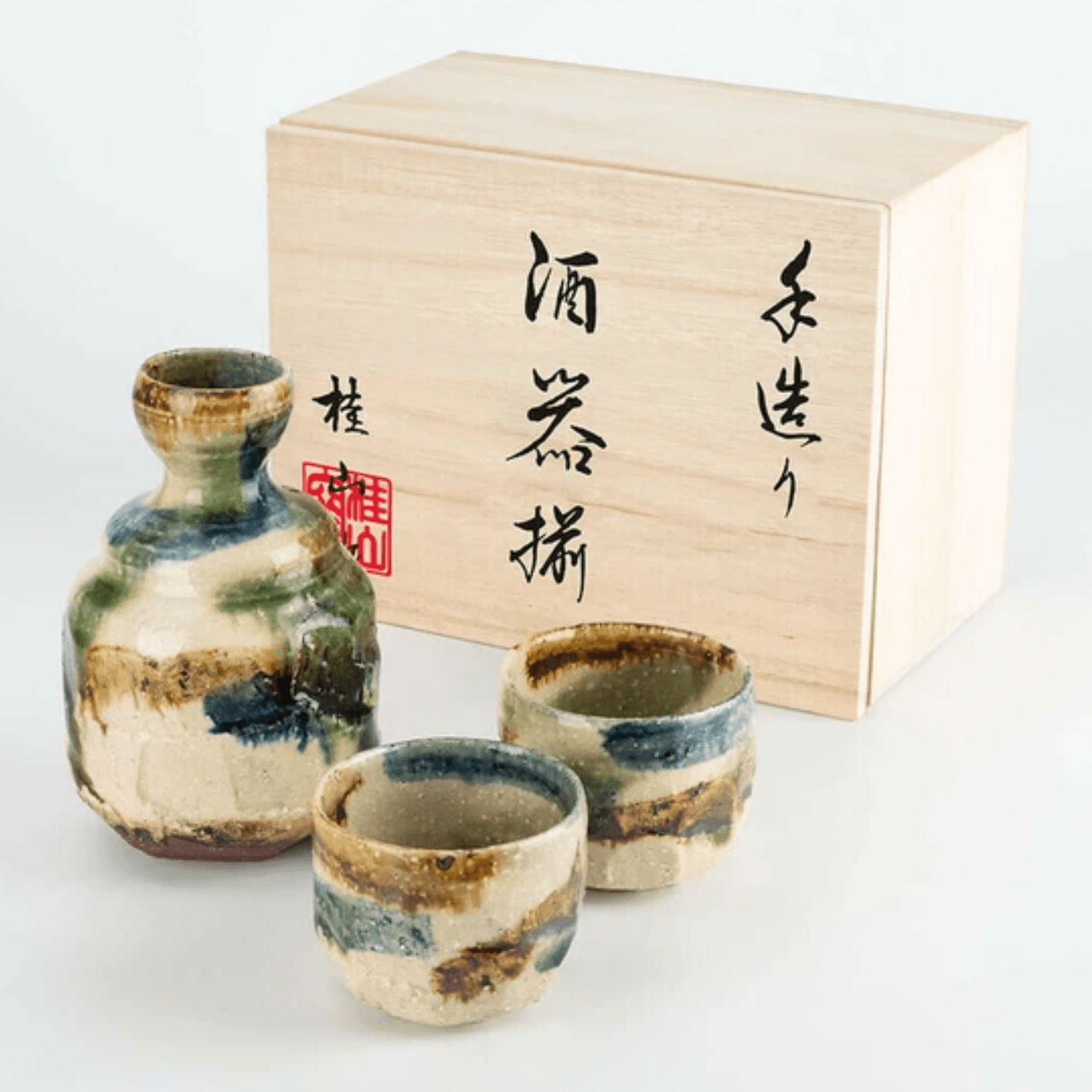
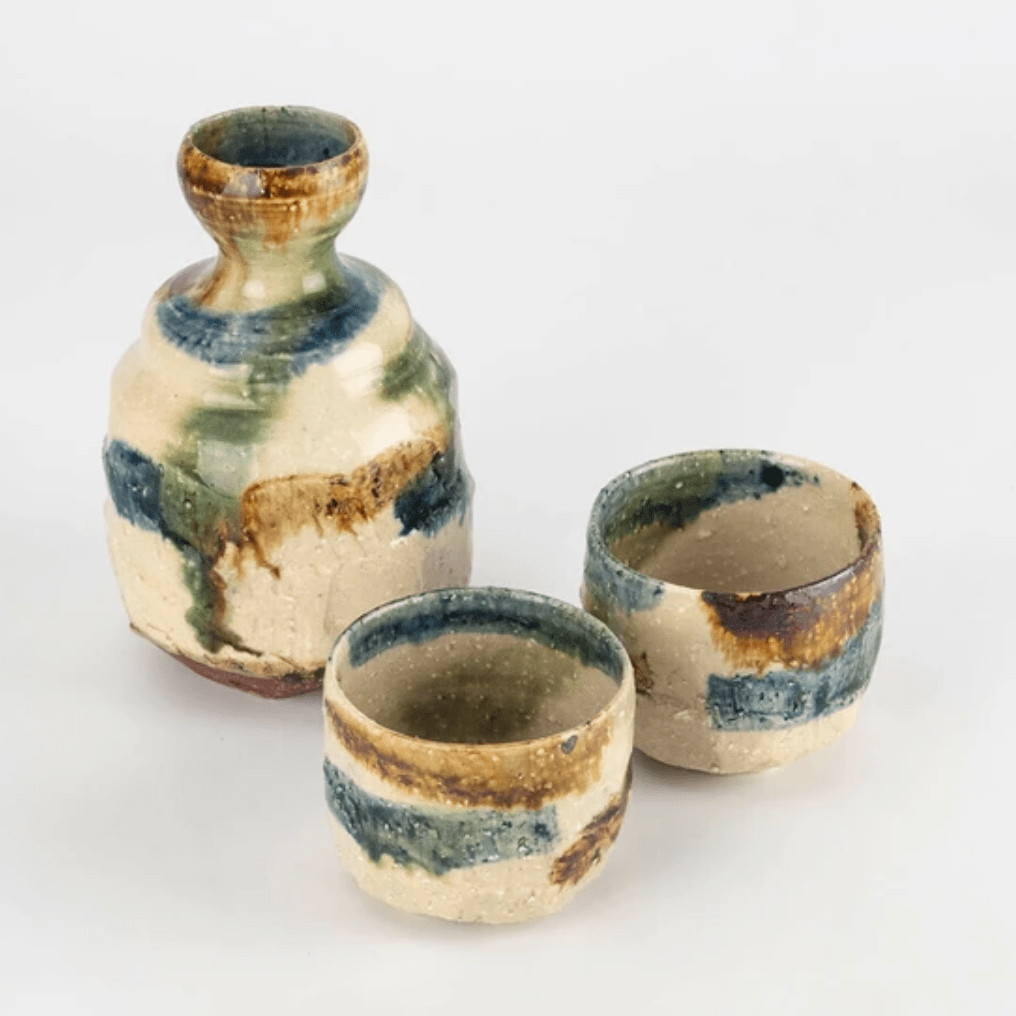
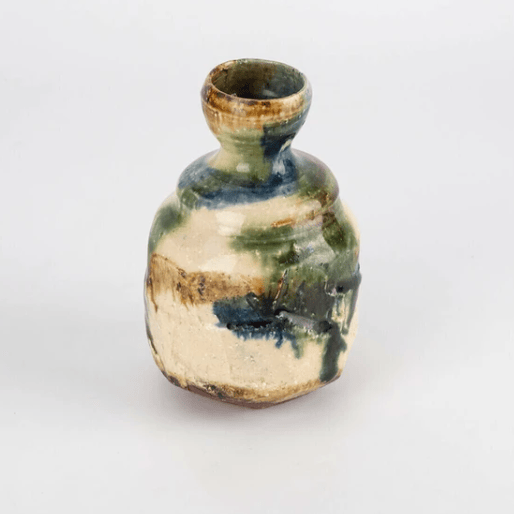
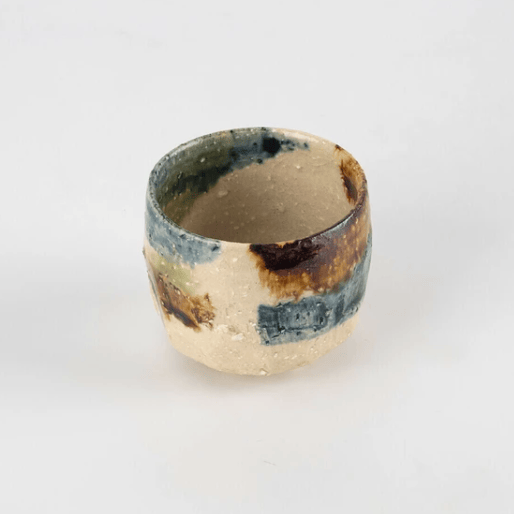
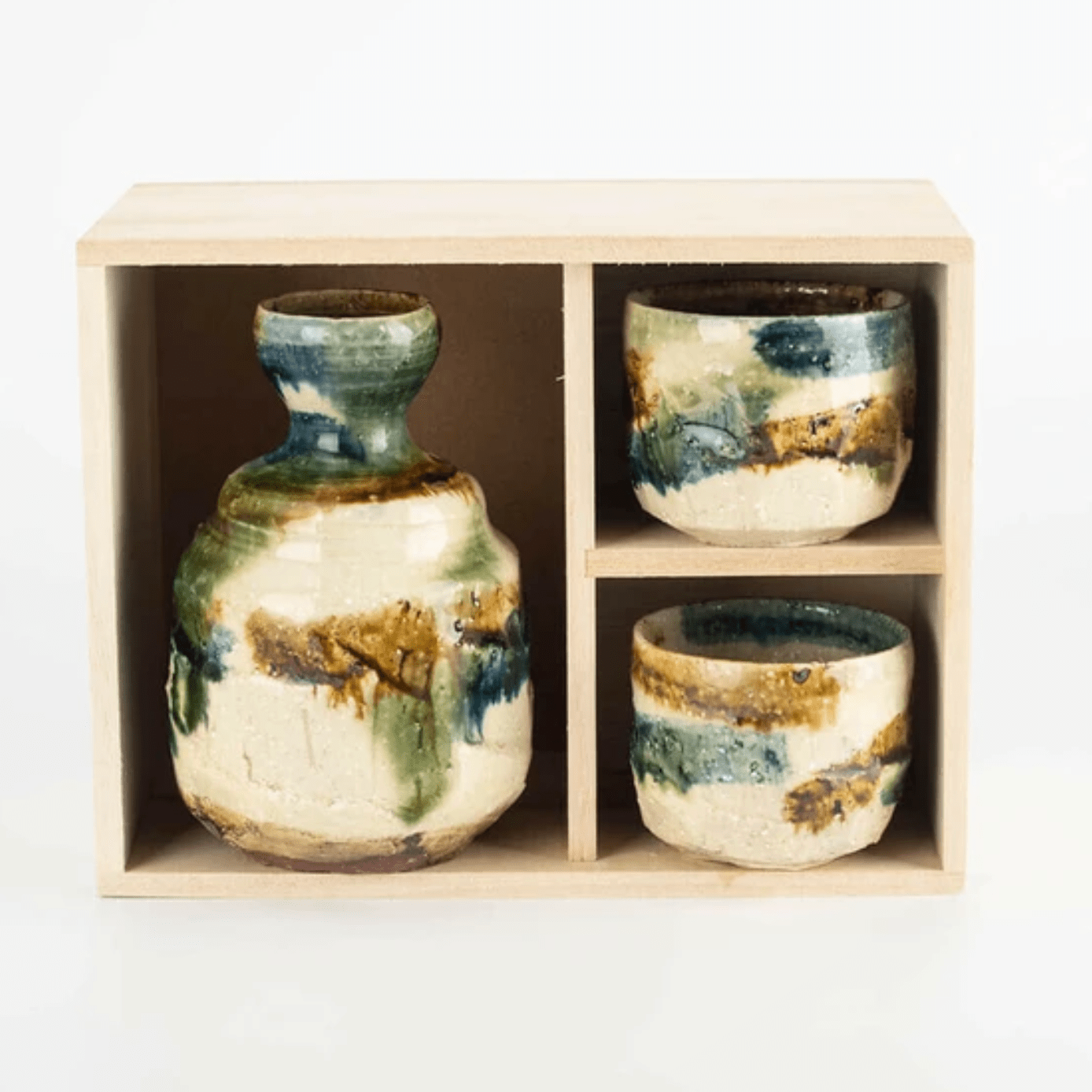

Handmade Mingei Oribe Sake Set
Fast & Secure Delivery from Japan to your Door [Shipping Policy]
Shop Safely with Encrypted Checkout and Verified Gateways.
Pairs well with

Handmade Mingei Oribe Sake Set
Tradition Poured Beautifully – Handmade Mingei Oribe Sake Set by Keizan Kiln
Handcrafted Heritage – Keizan Kiln & Kazufumi Wada
At the heart of this sake set is the legacy of Japanese folk craft. Hand-thrown by Kazufumi Wada, recipient of the prestigious Takuo Award, each piece is a tribute to Mingei philosophy—valuing beauty in utility, simplicity, and the human touch. Crafted at Keizan Kiln, a studio known for its reverence of tradition and commitment to quality, this set reflects generations of ceramic artistry rooted in Gifu’s Mino region.
The set features a robust tokkuri (carafe) and two ochoko (cups), finished in a signature Mingei Oribe glaze. Deep moss green mingles with cobalt, amber, and warm cream—each brushstroke and kiln mark telling its own story. The glaze pools and flows with unpredictability, creating landscapes of natural beauty that feel both rustic and refined.
Gift-Ready Paulownia Box & Timeless Appeal
Presented in a wooden box adorned with traditional calligraphy, this set makes an exceptional gift for weddings, housewarmings, or connoisseurs of Japanese culture. It invites quiet moments of appreciation, whether enjoyed during a cozy winter evening or a special celebration with friends. The solid yet organic form fits comfortably in hand, enhancing the tactile experience with every sip.
Functional art at its finest, the Handmade Mingei Oribe Sake Set brings warmth, story, and authenticity to your table. Discover the soulful pleasure of sake served in vessels made with heart and heritage.
Product Information
Care instructions
Note
FAQs
All you need to know about Japanese Pottery.
What types of traditional pottery are made in Japan?
Japan is home to several renowned pottery styles, including Mino ware (Gifu), Bizen ware (Okayama), Arita and Imari ware (Saga), Shigaraki ware (Shiga), and Mashiko ware (Tochigi). Each region has its own distinct materials, glazes, and firing techniques that reflect local history and aesthetics. Toki City in Gifu Prefecture is particularly renowned as the heart of Mino ware (Minoyaki)—the most widely produced pottery style in Japan.
What materials are used in artisan Japanese pottery?
Most artisan pottery in Japan is made from locally sourced clay, often mixed and refined by hand. Natural minerals and ash are used in glazes, and many pieces are wood-fired or fired in traditional climbing kilns (noborigama), producing unique surface textures and natural variations.
Are artisan Japanese pottery pieces safe for food use?
Yes. Authentic artisan pottery is made with food-safe, lead-free glazes and is carefully fired at high temperatures to ensure durability and safety. However, it's important to follow care instructions, especially for unglazed or porous ceramics.
What makes Japanese pottery different from Western ceramics?
Japanese pottery often emphasizes wabi-sabi—the beauty of imperfection—resulting in organic shapes, subtle asymmetry, and natural glazes. Unlike Western ceramics, which may prioritize uniformity, Japanese pieces often celebrate the individuality of each item, reflecting the artist's hand and the firing process.
How should I care for artisan-made Japanese pottery?
Hand-wash pottery with mild soap and avoid extreme temperature changes (like placing hot items into cold water). Some unglazed pieces may absorb moisture, so allow them to fully dry before storing. Avoid microwaves or dishwashers unless the piece is specifically labeled as safe for such use.
Do I need to season my matcha bowls before using them?
In most cases, seasoning a matcha bowl is not necessary—especially if the bowl is fully glazed, as the glaze naturally seals the surface and makes it ready for use. However, if the bowl is unglazed or has a raw clay base, a simple seasoning process called medome can help prevent cracking or staining. To season, soak the bowl in warm water mixed with a spoonful of cooked rice or flour for about 30–60 minutes, then rinse and let it dry completely. This step helps fill tiny pores in the ceramic and adds durability over time.

